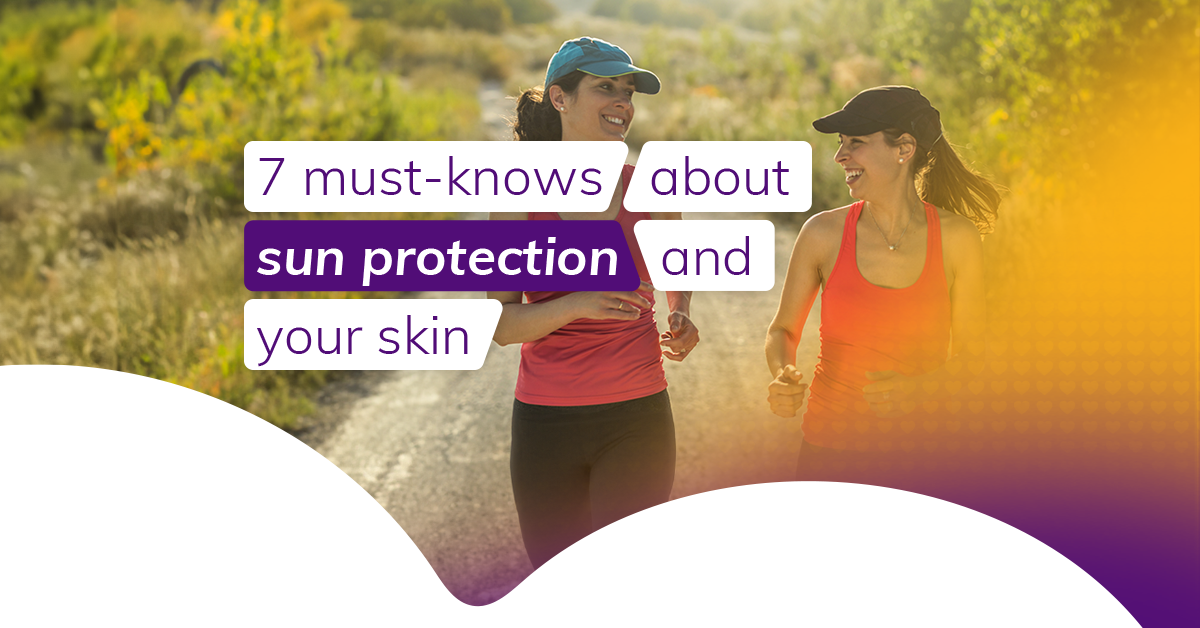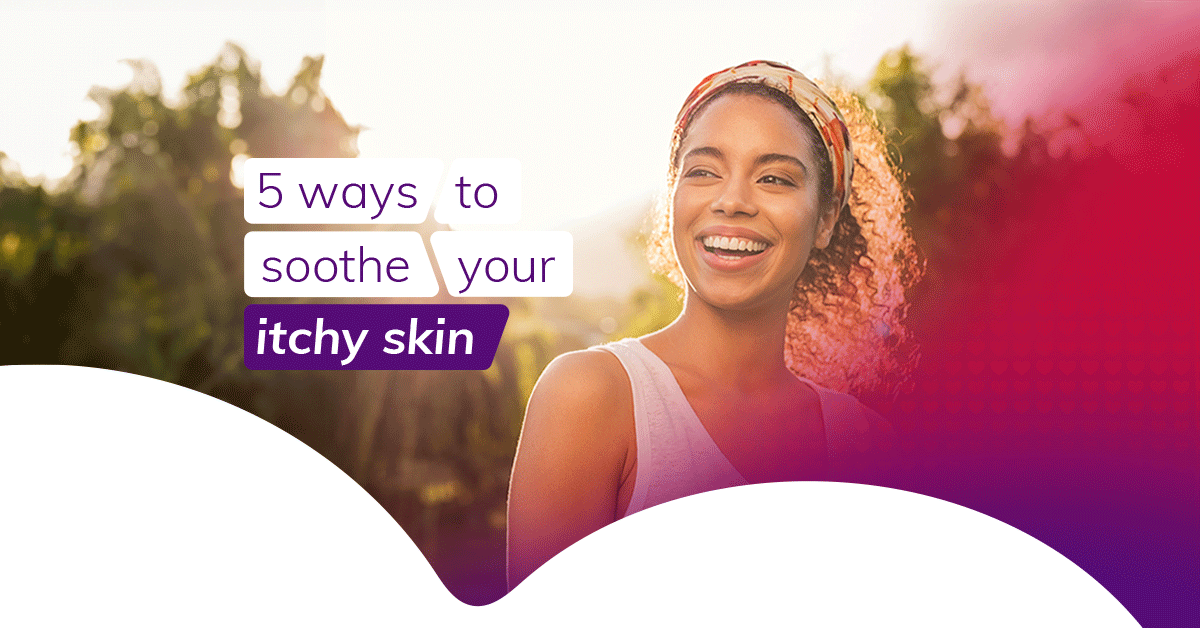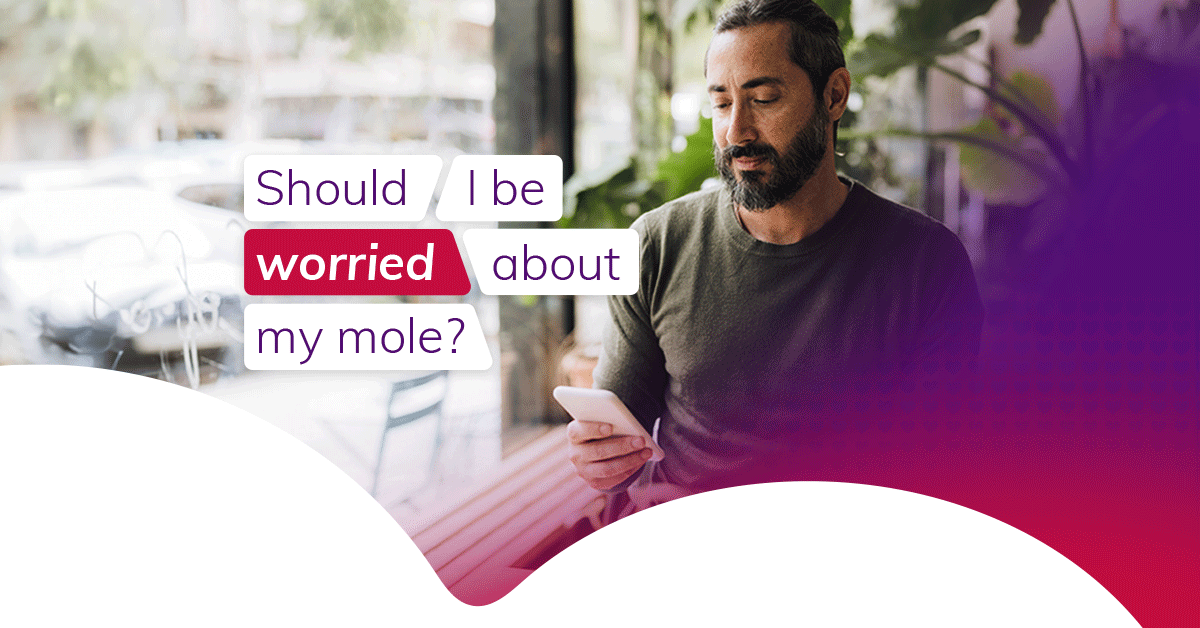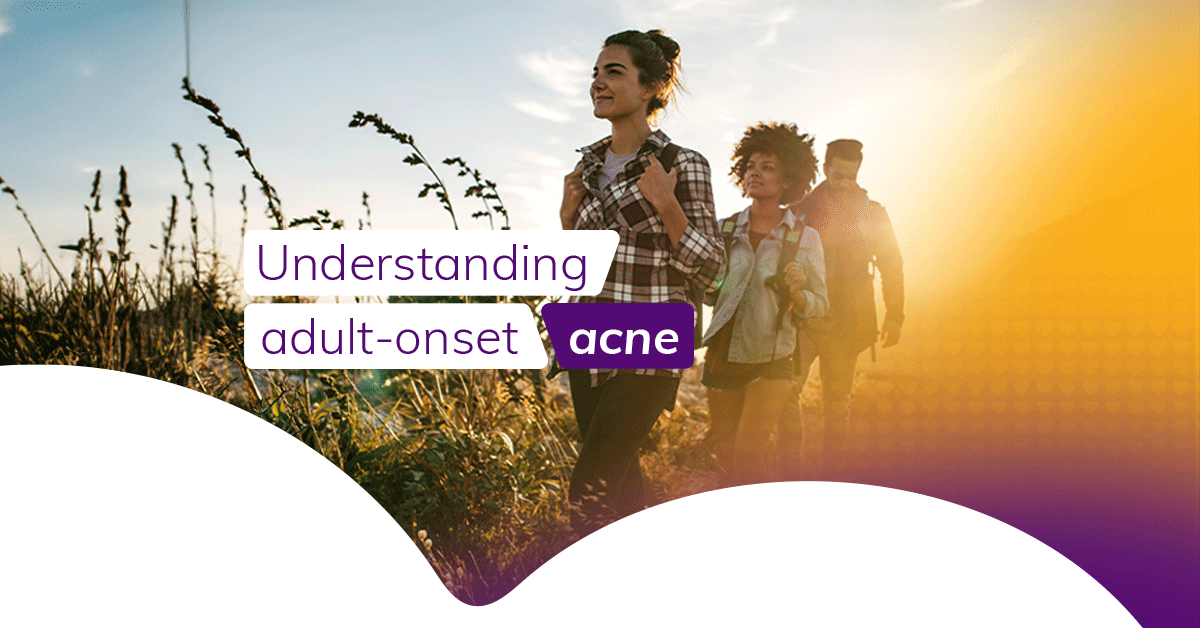

7 must-knows about sun protection and your skin
What’s the difference between UVA and UVB? What factor should our sun cream be? How often should we reapply? Vhi consultant dermatologist, Dr Rebecca Hellen, tells us the need-to-knows about sun damage and how we can protect our skin.
1. The impact of the sun on our skin
Sunshine can have a positive effect on mood and being active outdoors is an ideal way to improve overall health and wellbeing. While there are benefits to being in the sun, it’s important to protect ourselves from the harmful effects of solar radiation/sunlight.
Ultraviolet rays from the sun are what cause damage to our skin. UVA (Ultraviolet A) and UVB (Ultraviolet B) are invisible rays, and both are known to cause skin cancer. High levels of UVB cause sunburn whereas UVA is more often associated with causing wrinkles and skin ageing. Even if the skin doesn’t burn, exposure to ultraviolet light can still cause lasting damage to the skin. It’s important to use a broad-spectrum sunscreen that protects against both UVA and UVB light to protect against sunburn, reduce the risk of skin cancer and prevent premature skin ageing. Vitamin D production in the skin still occurs while wearing sunscreen, but this can be safely topped up with a supplement or by including oily fish and other foods rich in vitamin D in your diet.
2. Wearing sunscreen
Many people underestimate the risk of sun exposure in Ireland. In Ireland, the levels of ultraviolet increase from April to September. Sunscreen should be worn daily during these months to minimise the risk of skin cancer. While the UV levels are much lower in winter, applying sun protection year-round will help prevent skin ageing and reinforce the habit of wearing daily sunscreen. Keep in mind that sunscreen protects you against sunburn, but you can still accumulate significant damage from sunlight without developing a sunburn.
There are certain situations where we can often get caught out by the sun. Up to 80% of UV rays can pass through clouds. Many people attribute burning on a cool or cloudy day to “wind burn”, but really this is a sunburn from UVB.
People often ask if it’s possible to get burned when sitting near windows or if you should be wearing sunscreen near windows. UVB is blocked by all types of glass, so you won’t burn through windows, however, UVA passes through glass. This UVA exposure can cause sun damage, skin ageing and trigger photosensitive conditions like lupus. This is a consideration for people who spend a lot of time in the car or who work in an office by a window.
For everyday use, sunscreens with an SPF of 30 provide adequate protection. However, for outdoor exercise, swimming or if you are sweating, opt for a water-resistant SPF 50 sunscreen. Sunscreen only works as well as you apply it - you need to apply enough, reapply every two hours and top up again after swimming or sweating. Two good finger lengths of sunscreen should cover the face and neck. Essentially, you want to apply enough to provide a uniform protective layer over the skin. Sunscreens do expire, so check the open jar symbol on the back of the packaging which might say ‘12M’, meaning use within 12 months. Store sunscreen out of direct sunlight and don’t leave it in the car where it might overheat.
3. Skin conditions affected by the sun
The impact of the sun can be negative or positive, depending on your skin condition. A dermatologist may use phototherapy to treat conditions like psoriasis and eczema, however this is a very controlled way of delivering precise parts of the ultraviolet spectrum to the skin and minimises the risk of burning and skin cancer. Some people will experience a worsening of psoriasis with sun exposure and sunburn can trigger a flare of psoriasis.
Sunlight can worsen some conditions such as melasma (a common skin condition that causes light to dark brown facial pigmentation), rosacea and photosensitive conditions like lupus. Your healthcare provider can guide you on the relationship between your skin condition and the sun. Given the known association between sun exposure and skin cancer, everyone should protect their skin from the sun, regardless of having a skin condition or not.
4. Physical protection from the sun
Sunscreen is the last line of defence against the sun. Even if applied perfectly, its role is to prevent sunburn rather than to provide complete protection against ultraviolet light. This is why the term sunblock is no longer used. Your first line of protection is physical protection with clothing, hats and sunglasses. Avoid the sun during peak hours of 11am and 3pm, seek shade where possible, and don’t stay out in the sun for prolonged periods.
5. Protecting your moles in the sun
People should treat all of their skin the same when it comes to sun protection. This means you should protect every part of your skin as best you can. The same guidelines apply when it comes to protecting your moles as you do the rest of your skin:
- Cover up well in the sun and wear a hat
- Avoid exposure during in the middle of the day when UV levels are highest
- Apply sunscreen (SPF 30 at least) on exposed skin and reapply every two hours
If you notice a new mole that stands out or if you notice a change in the size, shape or colour of an existing mole, always get it checked by your healthcare provider. The vast majority of skin cancers are preventable with good sun safe habits, so make sun protection a part of your daily routine.
6. Skin ageing
The two biggest preventable causes of skin ageing are sun exposure and smoking. Over many years, sun exposure causes skin thinning, discolouration and wrinkling. Lighter skin types are more susceptible to this, while darker skin types have more natural protection. Diligent sun protection is the most important part of any anti-ageing skincare routine.
7. Dealing with sunburn
If you get sunburned, try your best to avoid sun exposure until your skin has fully recovered. This is because your skin is far more sensitive to the sun when it’s burned. Apply a moisturiser with aloe vera (you can keep this in the fridge), take over-the-counter painkillers to help with pain, and drink plenty of water to stay hydrated. If you develop blisters, do not pop them. Cover them with petroleum gel until they are healed. If you feel unwell due to sunburn, seek medical attention.
Remember, you don’t need to get sunburned to cause damage to your skin―you can damage your skin from the sun without you realising or seeing it. You need to always think about sun protection in advance; cover up, avoid excessive sun exposure, use SPF and avoid getting burned. If you do get bad sunburn, blisters, or feel unwell after sun exposure, speak to your healthcare provider for advice.
This content is for information purposes only and is not intended or implied to be a substitute for professional medical advice, diagnosis, or treatment. Always seek advice from your GP or an appropriate medical professional if you have concerns about your health, or before commencing a new healthcare regime. If you believe that you are experiencing a medical emergency call 999 / 112 or seek emergency assistance immediately.
Meet our Vhi Verified Expert
Dr Rebecca Hellen




